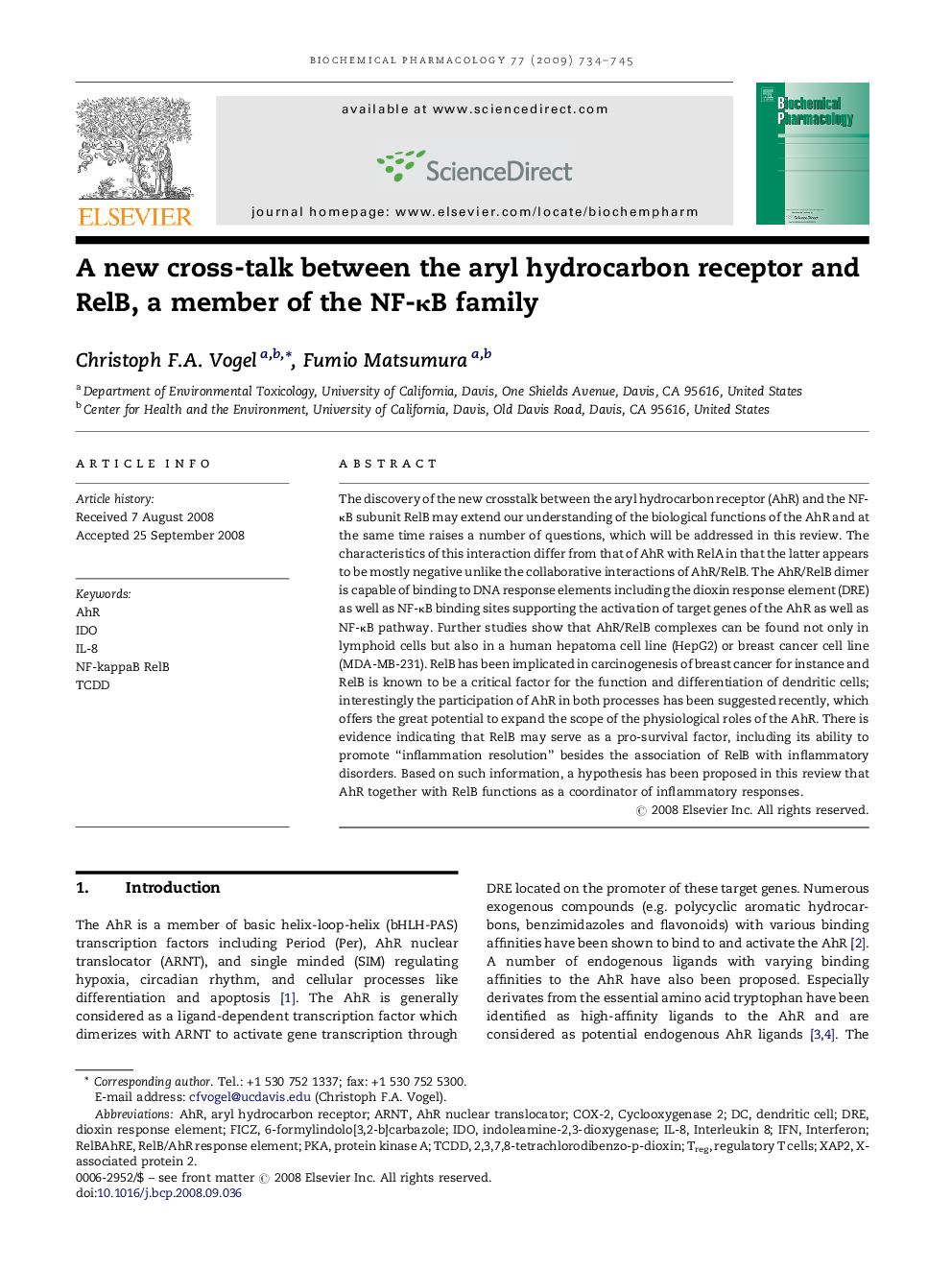| کد مقاله | کد نشریه | سال انتشار | مقاله انگلیسی | نسخه تمام متن |
|---|---|---|---|---|
| 2514498 | 1118469 | 2009 | 12 صفحه PDF | دانلود رایگان |

The discovery of the new crosstalk between the aryl hydrocarbon receptor (AhR) and the NF-κB subunit RelB may extend our understanding of the biological functions of the AhR and at the same time raises a number of questions, which will be addressed in this review. The characteristics of this interaction differ from that of AhR with RelA in that the latter appears to be mostly negative unlike the collaborative interactions of AhR/RelB. The AhR/RelB dimer is capable of binding to DNA response elements including the dioxin response element (DRE) as well as NF-κB binding sites supporting the activation of target genes of the AhR as well as NF-κB pathway. Further studies show that AhR/RelB complexes can be found not only in lymphoid cells but also in a human hepatoma cell line (HepG2) or breast cancer cell line (MDA-MB-231). RelB has been implicated in carcinogenesis of breast cancer for instance and RelB is known to be a critical factor for the function and differentiation of dendritic cells; interestingly the participation of AhR in both processes has been suggested recently, which offers the great potential to expand the scope of the physiological roles of the AhR. There is evidence indicating that RelB may serve as a pro-survival factor, including its ability to promote “inflammation resolution” besides the association of RelB with inflammatory disorders. Based on such information, a hypothesis has been proposed in this review that AhR together with RelB functions as a coordinator of inflammatory responses.
Journal: Biochemical Pharmacology - Volume 77, Issue 4, 15 February 2009, Pages 734–745